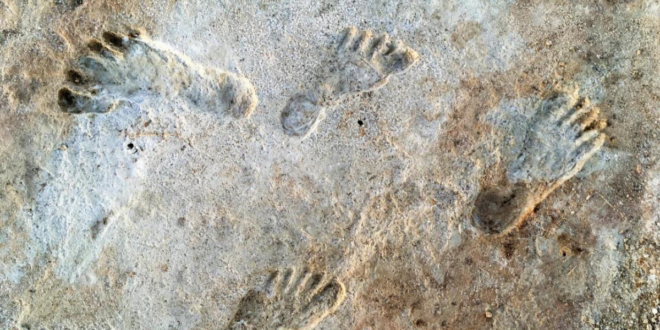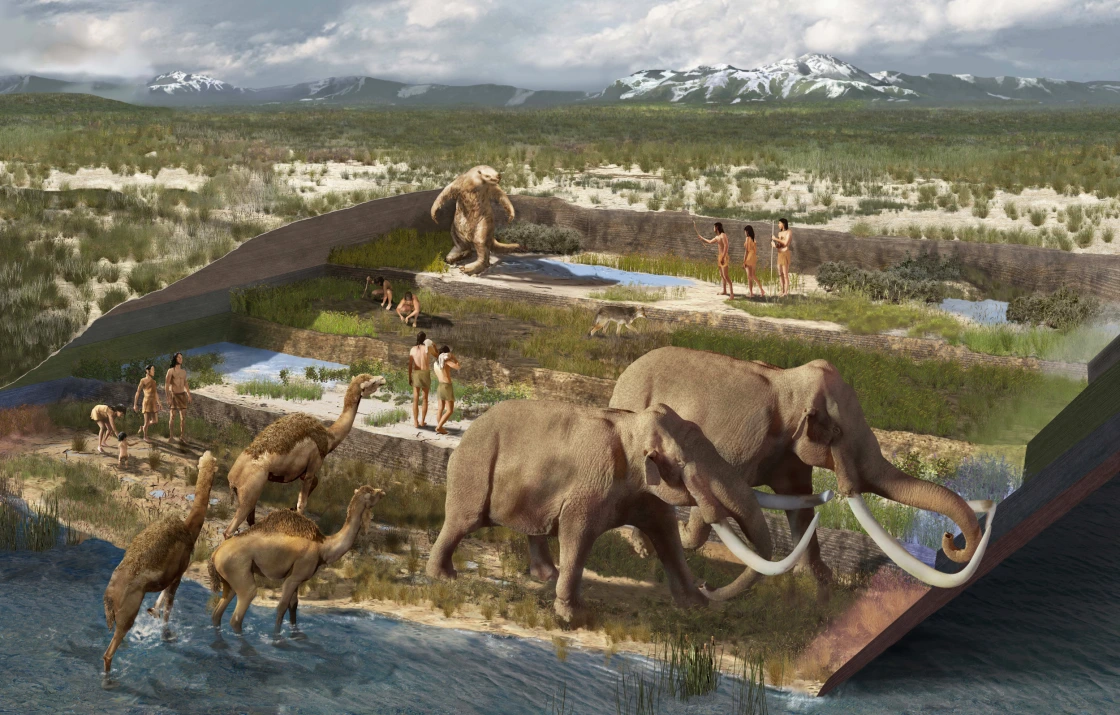The ancient footprints located at the white sands park were here for a long time, but recent research shows that they are the earliest evidence of humans literally walking on the land in North America!
David Bustos, a wildlife scientist, heard about the footprints, also known as the ghost tracks, in his first visit to White Sands National Park located in New Mexico back in 2005. The ghost track can’t be seen all the time. Namely, they appear only when the ground is wet enough at certain seasons and times of the year.
10 years after their discovery, back in 2016, some scientists have confirmed that the footprints belong to an actual human, and only this year, the ghost tracks were dated to be the earliest footprints found in North America.
Quote: “We’d been suspicious of the age for a while, and so now we finally have that it’s really exciting,” Bustos said. “One of the neat things is that you can see mammoth prints in the layers a meter or so above the human footprints so that just helps to confirm the whole story.”
In order to date the age of the ghost tracks at white sands, scientists used the seeds of a plant that was native to the region back when there was a lake in the vicinity. The seeds of the ditch grass were found both above and below the footprints, and the scientists radiocarbon-dated the seeds in order to get the age of the seeds.
One of the tracks located in the White Sands National Park was recognized as one of the earliest footprints on the continent but also as the oldest evidence that there were humans anywhere in the Americas. The footprints revealed that people were living in the Americas as early as 21000 to 23000 years ago. This is much earlier than scientists once believed.
Quote: Mathew Bennett, the lead author of the study and a professor of environmental science at the Bournemouth University, said: “It’s the earliest unequivocal evidence for humans in the Americas,”
The national park is riddled with fossilized footprints. And according to the professor, they are some of the best evidence of humans.
Quote: “A footprint is a really good, unequivocal data point,” stated the professor. “That’s the importance of this site — we know they were there.”
The ghost tracks will surely give better credibility even to other evidence that scientists have about humans in the Americas.
Quote: “You can now look at the oldest sites and say, ‘We know they were there during the Last Glacial Maximum,’ so maybe some of these oldest sites are also reliable,” the professor said.
“Last Glacial Maximum” is a well-known term in the scientific community. It refers to the height of the last ice age, which happened around 20000 to 26000 years ago.
Scientists have debated whether humans got to the Americas taking a northern route from Siberia, pre or post the Glacial Maximum.
The ghost tracks finally answer this question to them. This evidence suggests that people might’ve been here up to 30000 years ago, thousands of years earlier than most scientists thought.
Today, the White Sands National Park is mostly a desert, but back then, it was a lush wetland where a lot of animals, as well as humans, lived.
According to Thomas Urban, the co-author of the research, the human footprints that were mixed up with the animal footprints show that people were there for more than 2000 years.
Quote: “There are multiple footprint layers spanning a significant amount of time, suggesting a sustained human presence in the area during the Last Glacial Maximum, as opposed to a single event,” he said.
Urban was the company that developed the non-invasive ground-penetrating radar in order to get the best location for excavation.
Scientists found that the smaller footprints, most likely from teenagers and children, vastly outnumber the ones that were made by adults. They believe that this is because of the fact that kids were involved in much simpler labor than hunting and other skilled tasks.
Quote: “Their presence is simply part of ordinary life and should be expected,” he said. Their activities may have ranged from playing to chores, such as gathering food, water, and raw materials for their hunter-gatherer community.
Cynthia Liutkus-Pierce – a geologist who wasn’t actually involved in any way in the research at the White Sands National Park, stated that it’s hard to determine when fossilized footprints were made, especially if they were pressed in layers of mud. And that she was glad that the team managed to radiocarbon date these footprints.
Quote: ‘It’s great to see that this team was able to constrain the date of the footprint formation using radiocarbon dates from the [layers] above and below,” stated Cynthia in an email.
Footprints are not like bones and artifacts. They are capable of yielding clues about the printmakers and their day-to-day lives.
Quote: “Human footprints give us a glimpse into the lives of our ancestors and, in this case, provide detailed information on their day-to-day activities and social dynamics,” Liutkus-Pierce said.
 Viral Hatch US/UK No.1 News Portal
Viral Hatch US/UK No.1 News Portal










